This document outlines a short course on opinion dynamics in networks, focusing on various models such as threshold models, adaptive voter models, and bounded-confidence models. It discusses how these models can explain the spread of opinions and misinformation in social networks while considering the impact of network structure on dynamics. The text highlights key studies, examples, and potential future research directions in the field.

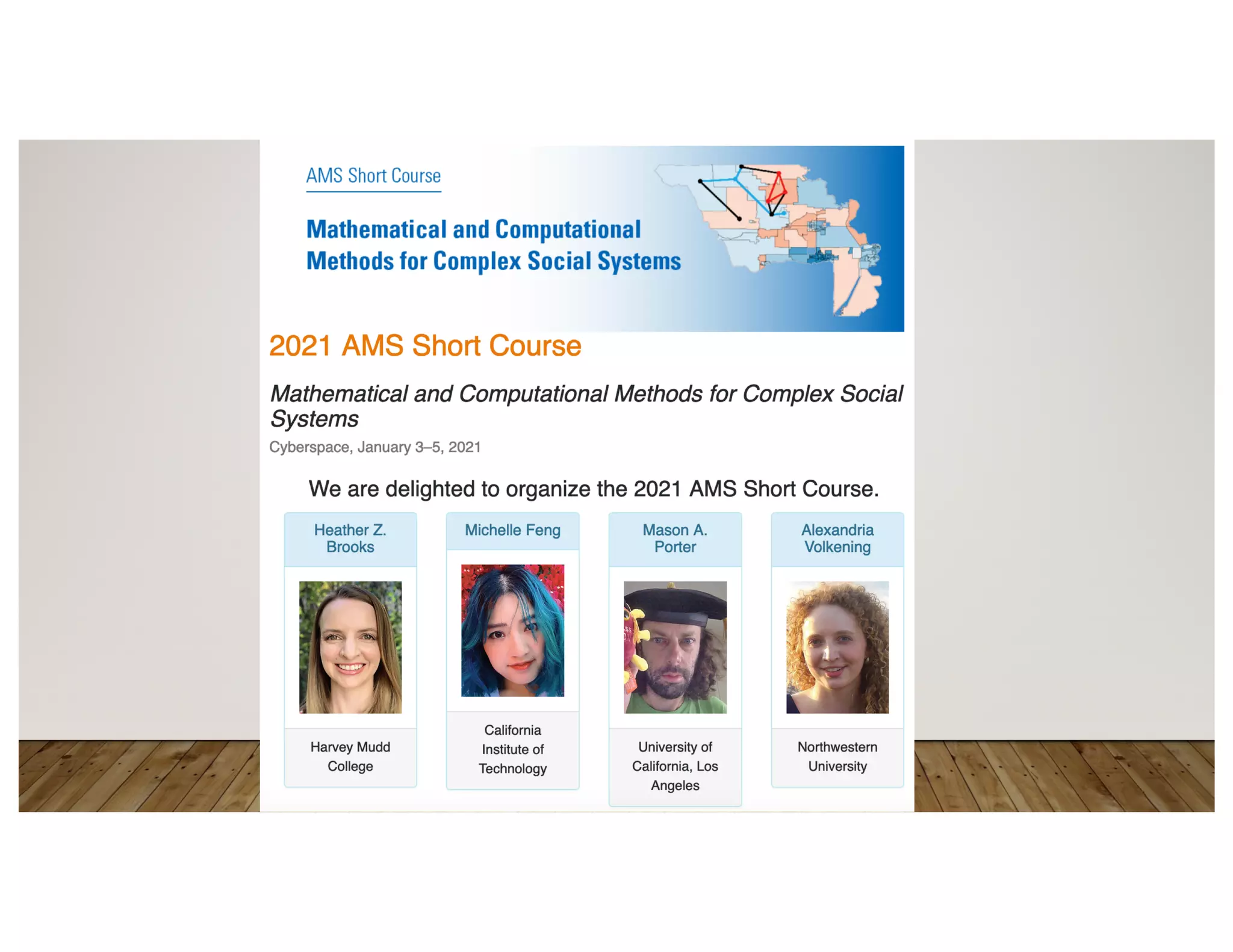

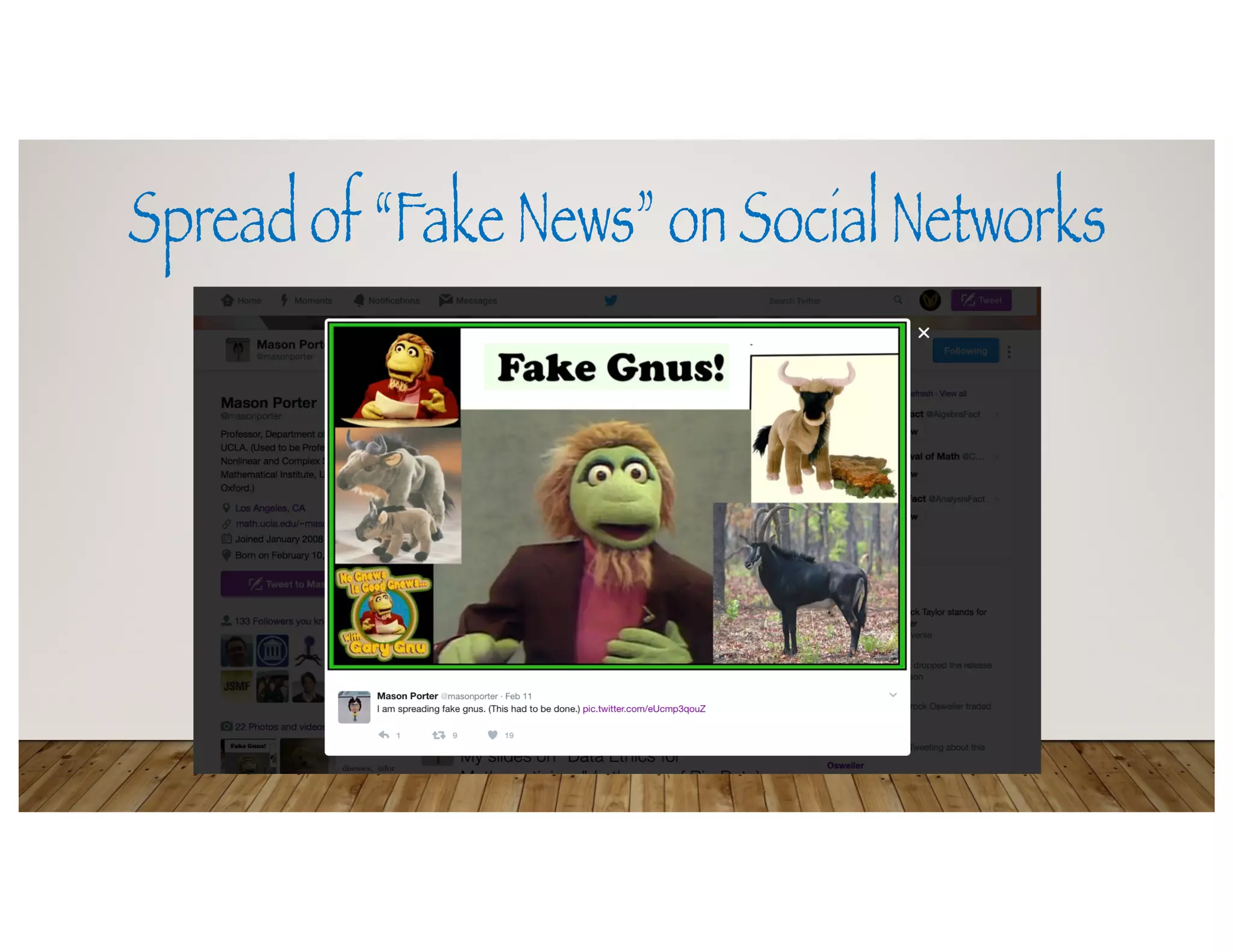


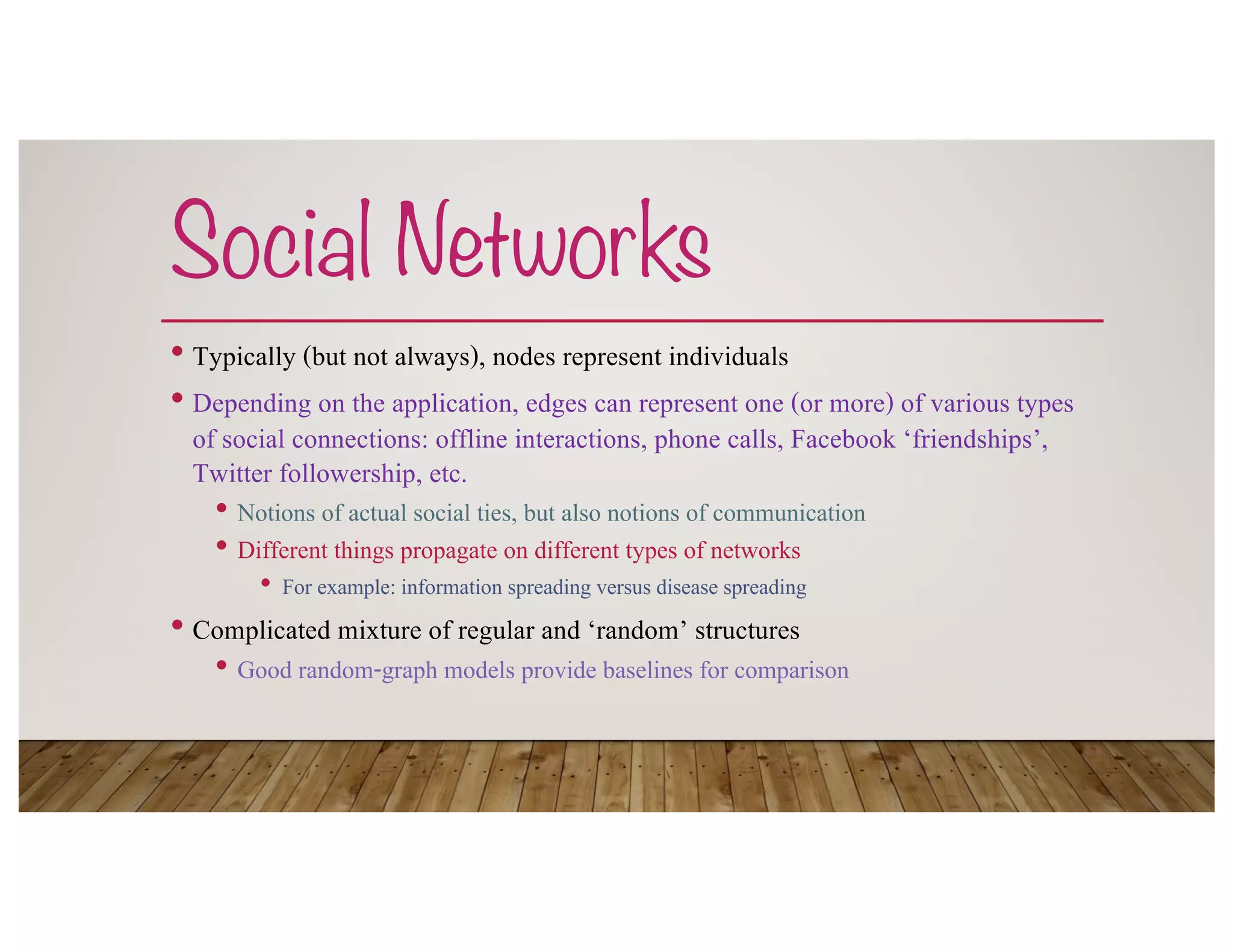
![Dynamical Processes on Networks
•Incorporate which individuals (nodes) interact with which other
individuals via their ties (edges).
•This yields a dynamical system on a network.
•Basic question: How does network structure affect dynamics (and
vice versa)?
•MAP & J. P Gleeson [2016], “Dynamical Systems on Networks: A
Tutorial”, Frontiers in Applied Dynamical Systems: Reviews and
Tutorials, Vol. 4](https://image.slidesharecdn.com/opinions-nordita-april2021-210423023747/75/Opinion-Dynamics-on-Networks-8-2048.jpg)




![A Threshold Model with Hipsters
• J. S. Juul & MAP [2019], “ Hipsters on Networks: How a Minority Group of Individuals Can Lead to an
Antiestablishment Majority”, Physical Review E, Vol. 99: 022313
• WTM rules to adopt some product (A or B)
• Conformist node: Adopts majority opinion from local neighborhood
• Hipster node: Adopts minority opinion (from full network, like a best-seller list) from ! times ago](https://image.slidesharecdn.com/opinions-nordita-april2021-210423023747/75/Opinion-Dynamics-on-Networks-13-2048.jpg)
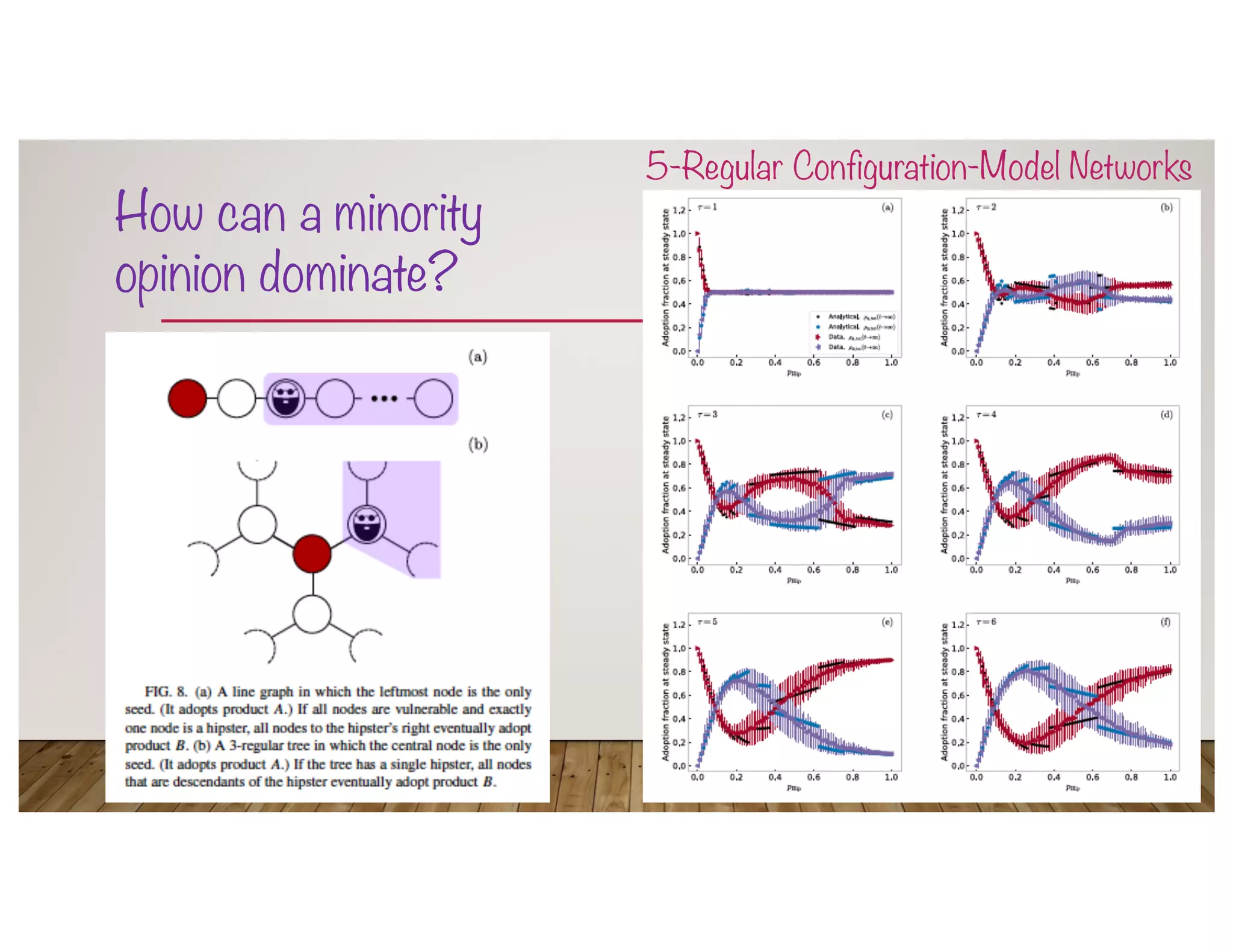
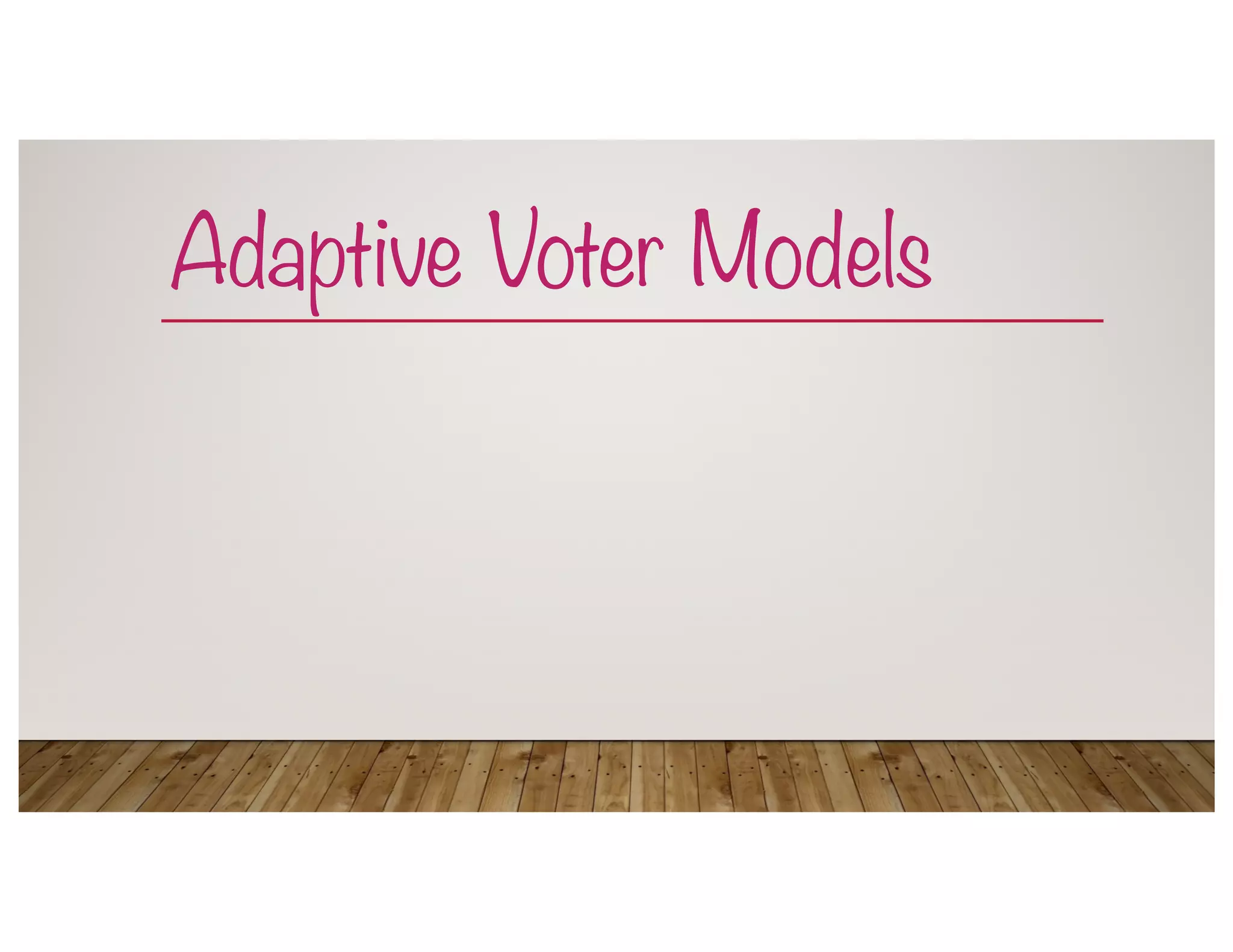
![“The” Voter Model
• S. Redner [2019], “Reality Inspired Voter Models: A Mini-Review”, Comptes
Rendus Physique, Vol. 20:275–292
• In an update step, an individual updates their opinion based on the opinion of a
neighbor
• One choice: asynchronous versus synchronous updating
• Select a random node (e.g., uniformly at random) and then a random neighbor
• Another choice: node-based models versus edge-based models
• Select a random edge (or perhaps a random “discordant” edge)
• In Kureh & Porter (2020), we use asynchronous, edge-based updates.](https://image.slidesharecdn.com/opinions-nordita-april2021-210423023747/75/Opinion-Dynamics-on-Networks-16-2048.jpg)
![A Nonlinear Coevolving Voter Model
• Y. Kureh & MAP [2020], “Fitting In
and Breaking Up: A Nonlinear Version
of Coevolving Voter Models”, Physical
Review E, Vol. 101, No. 6: 062303
• We consider versions of the model with
three types of changes in network
structure.
• Each step: probability !q of rewiring
step and complementary probability 1 –
!q of opinion update
• q = nonlinearity parameter](https://image.slidesharecdn.com/opinions-nordita-april2021-210423023747/75/Opinion-Dynamics-on-Networks-17-2048.jpg)

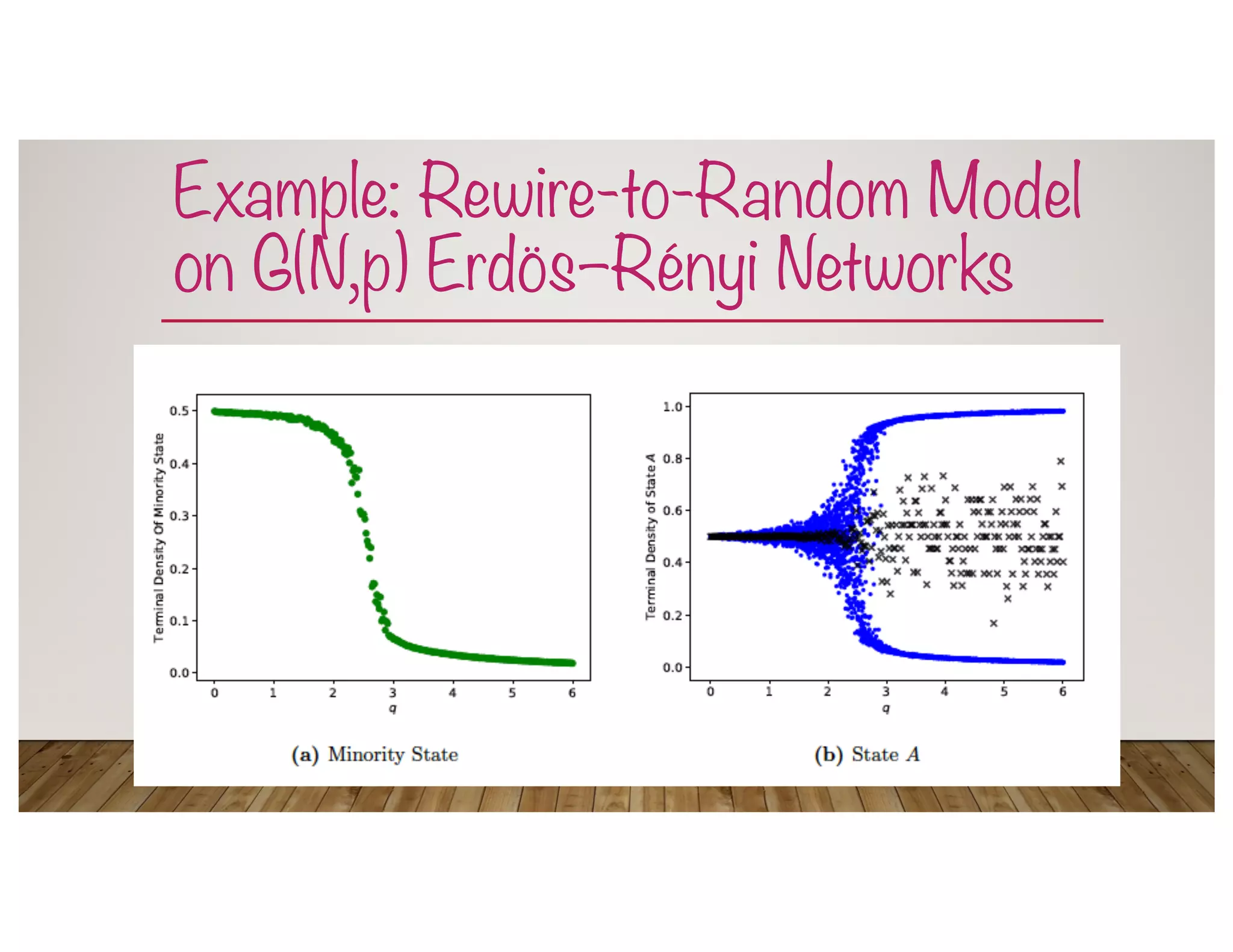
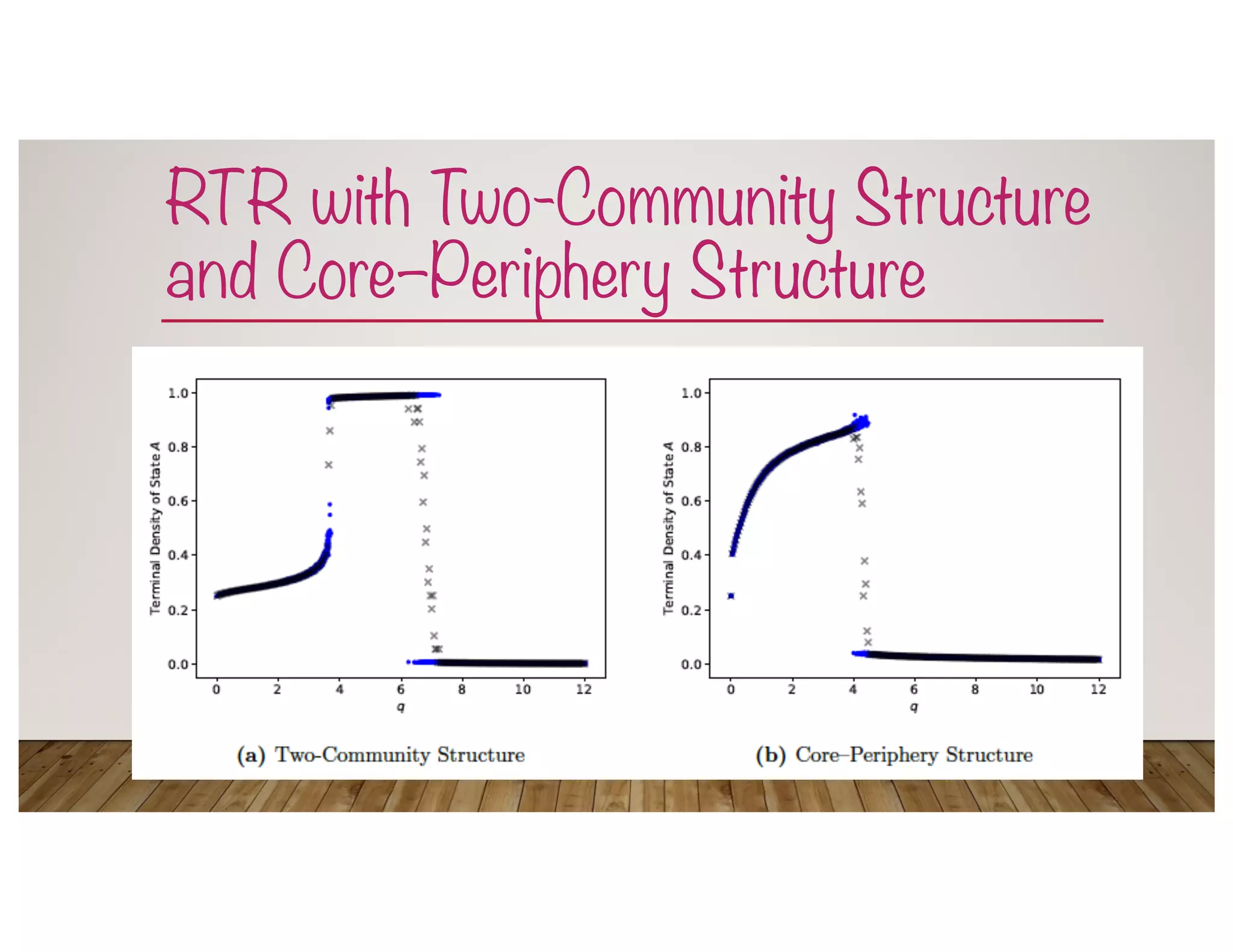



![Bounded-Confidence Models
• Continuous-valued opinions on some space, such as [–1,1]
• When two agents interact:
• If their opinions are sufficiently close, they compromise by some amount
• Otherwise, their opinions don’t change
• Two best-known variants
• Deffuant et al. model: asynchronous updating of node states
• Hegselmann–Krause model: synchronous updating of node states
• Most traditionally studied without network structure (i.e., all-to-all coupling of agents) and with a
view towards studying consensus
• By contrast, original motivation — but barely explored in practice — of bounded-confidence models
was to examine how extremist ideas, even when seeded in a small proportion of a population, can take
root in a population](https://image.slidesharecdn.com/opinions-nordita-april2021-210423023747/75/Opinion-Dynamics-on-Networks-24-2048.jpg)
![Bounded-Confidence Model on Networks
• X. Flora Meng, Robert A. Van Gorder, & MAP [2018], “Opinion Formation and Distribution in a Bounded-
Confidence Model on Various Networks”, Physical Review E, Vol. 97, No. 2: 022312
• Network structure has a major effect on the dynamics, including how many opinion groups form and how long they take to form
• At each discrete time, randomly select a pair of agents who are adjacent in a network
• If their opinions are close enough, they compromise their opinion by an amount proportional to the difference
• If their opinions are too far apart, they don’t change
• Complicated dynamics
• Does consensus occur? How many opinion groups are there at steady state? How long does it take to converge to steady state?
How does this depend on parameters and network structure?
• Example: Convergence time seems to undergo a critical transition with respect to opinion confidence bound (indicating
compromise range) on some types of networks](https://image.slidesharecdn.com/opinions-nordita-april2021-210423023747/75/Opinion-Dynamics-on-Networks-25-2048.jpg)


![Influence of Media
• Heather Z. Brooks & MAP [2020], “A Model for the Influence of Media on the Ideology of
Content in Online Social Networks”, Physical Review Research, Vol. 2, No. 2: 023041)
• Discrete events (sharing stories), but the probability to share them (and thereby influence
opinions of neighboring nodes) is based on a bounded-confidence mechanism
• Distance based both on location in ideology space and on the level of quality of the content that is
being spread
• Include “media nodes” that have only out-edges
• How easily can media nodes with extreme ideological positions influence opinions in a network?
• Future considerations: can also incorporate bots, sockpuppet accounts, etc.](https://image.slidesharecdn.com/opinions-nordita-april2021-210423023747/75/Opinion-Dynamics-on-Networks-28-2048.jpg)


